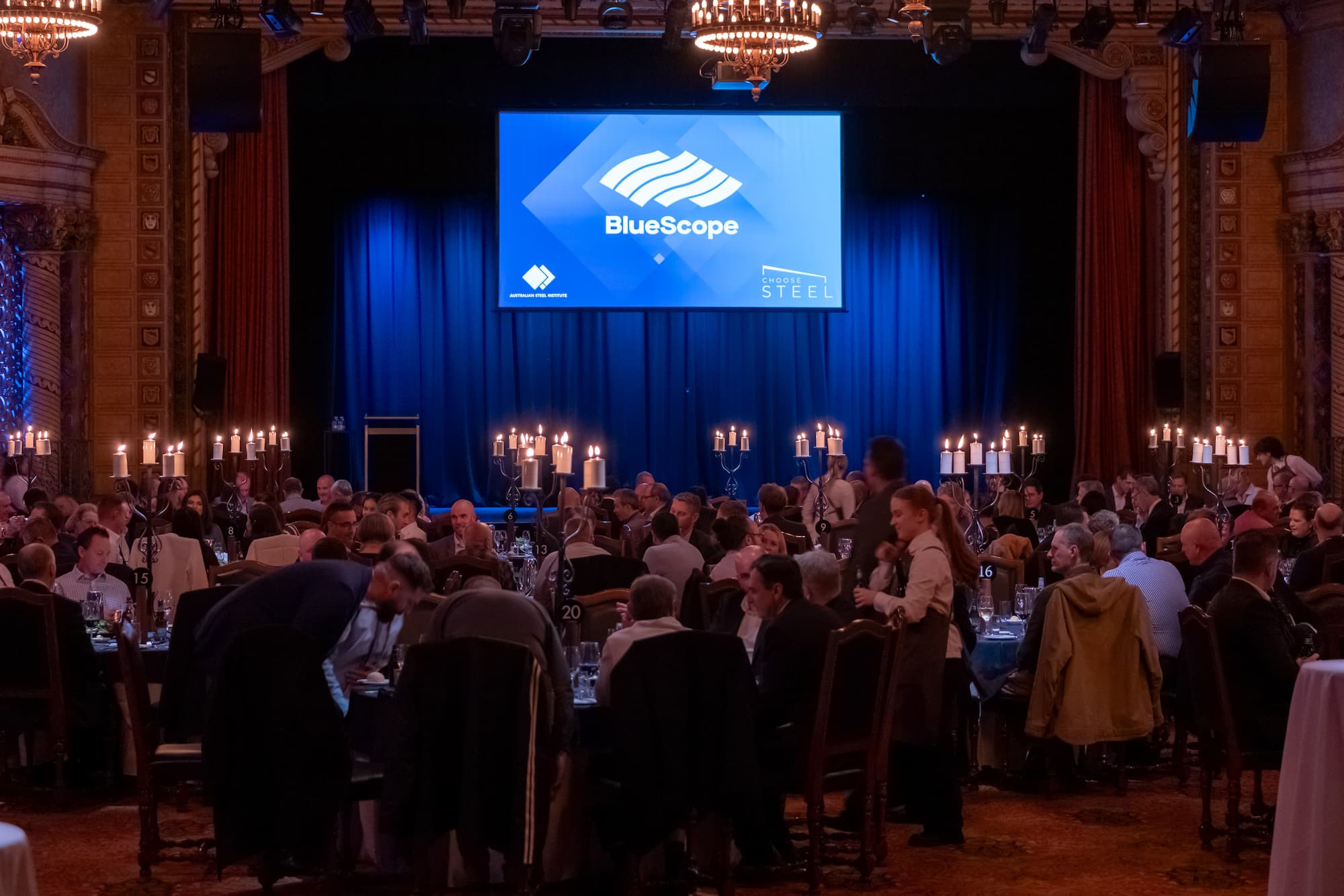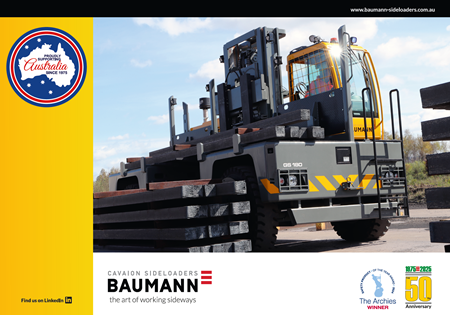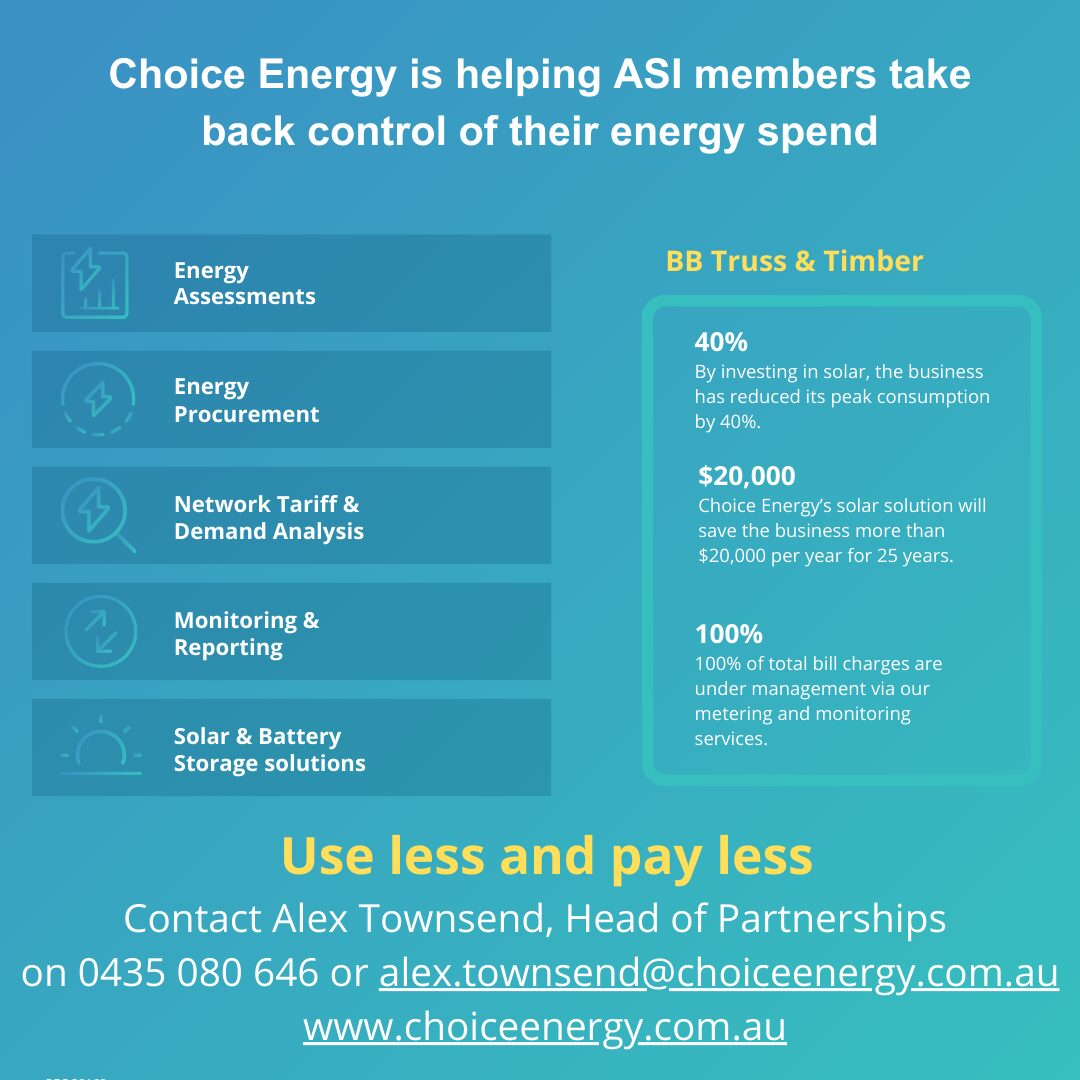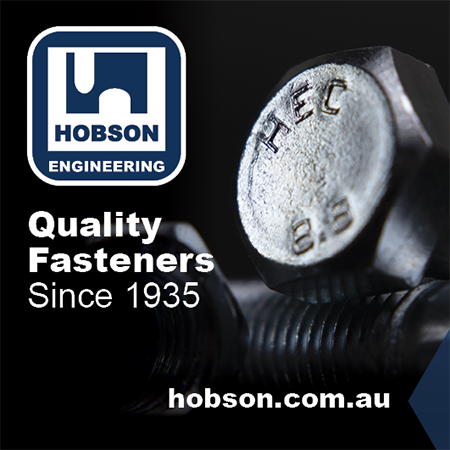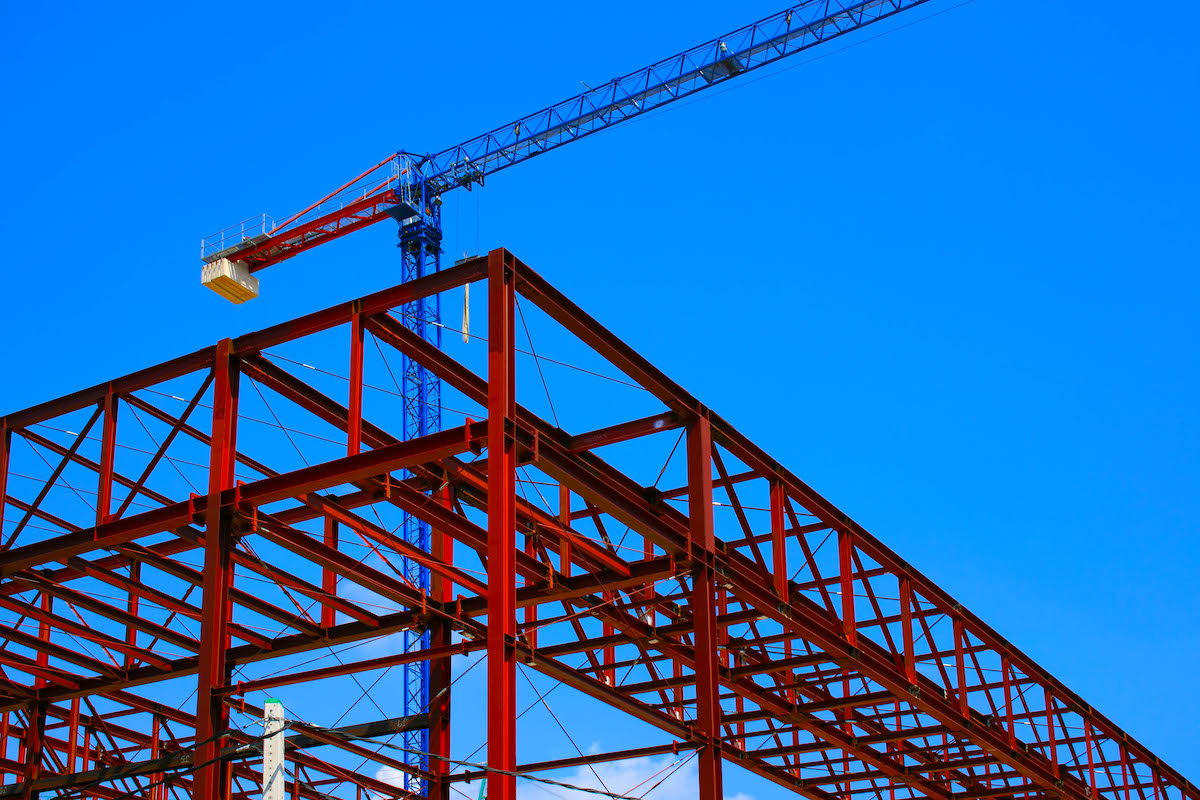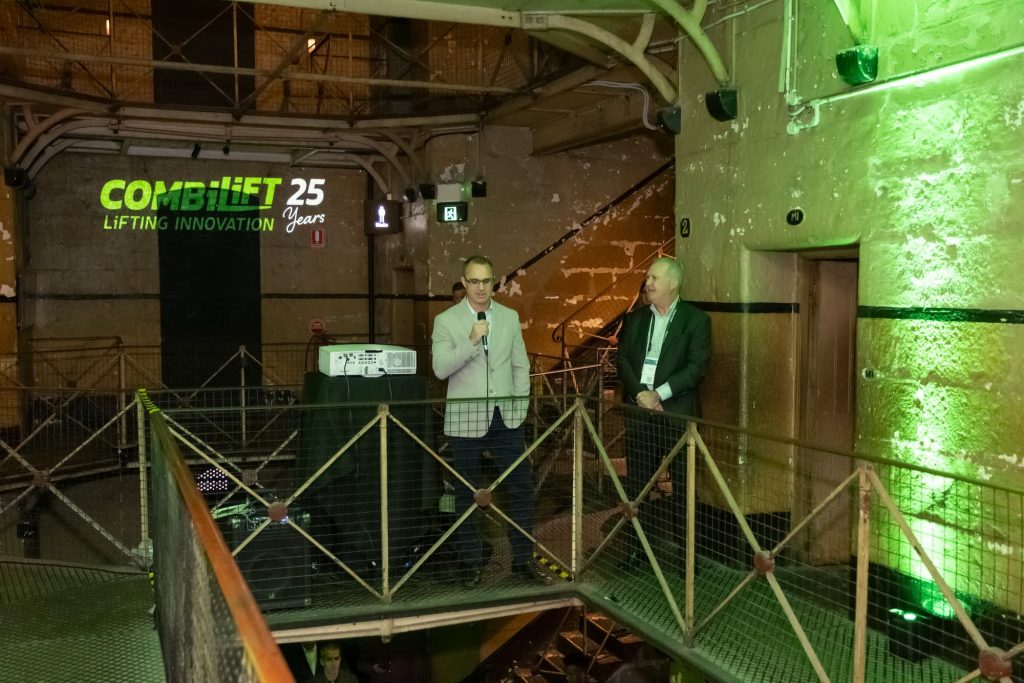

Over 240 delegates enjoyed the ASI’s 2023 Australian Steel Convention in Melbourne from 10 to 12 September. With the theme of Choose Steel, sessions focused on both steel as the preferred building material and why to choose steel as a career. Delegates took away valuable insights on everything from global trends, right through to local innovations, as well as inspirational stories.
The 2023 Australian Steel Convention kicked off with a welcome reception at Old Melbourne Goal. Sponsored by Combilift, the function saw drinks and canapes served in the gaol where Australian bushranger Ned Kelly lived his final days.
The night’s festivities provided those in attendance with the opportunity to chat informally, and compare notes ahead of the formal Convention program. Those who attended were treated to delicious food and drinks, as well as live music. Attendees were welcomed by Mark Cain, ASI’s chief executive, and heard from Chris Littlewood, Combilift’s Australian country manager.
Ministerial address: Ed Husic
Minister for Industry and Science, Ed Husic, opened day one of the convention, saying that renewable energy is offering a host of new opportunities for Australian-made steel.
According to Husic, Australian-made steel has a key role to play in the shift to advanced manufacturing, renewable energy and low emissions, including production of wind turbines.
“We want to be a country that makes things. Australian-made steel will play a vital role in that vision. The net result is higher paid jobs and greater prosperity for Australians everywhere.”
Husic said Australian-made steel was ‘crucial’ to the economy, employing 140,000 people and generating $30 billion in annual revenue.
Husic said: “I am the son of a metal worker and I know how important steel is to the nation.”
Macro-economics and their impact the on global steel industry
The first session of day one focused on economic challenges facing the steel industry.
Dr Alan Dupont, CEO of Cognoscenti, explained to delegates that the world is facing a polycrisis. “Multiple systemic disturbances—from the Ukraine conflict to rising US-China tensions, accelerating deglobalisation and a high stakes tech war—are creating the most volatile, unpredictable and challenging investment environment since World War II.”
With this more complex, disparate, cross-cutting set of challenges, comes a volatile business environment that makes it difficult to plan ahead more than a few months.
The implication for Australian businesses, particularly those in the steel supply chain, is an ever increasing need for sovereign capability. Steel has to be a focus. Geopolitical alliances are going to dictate economic policies much more than in the past. As world economies continue to divide into two competing blocks, the more there will be a fracturing of investment patterns.
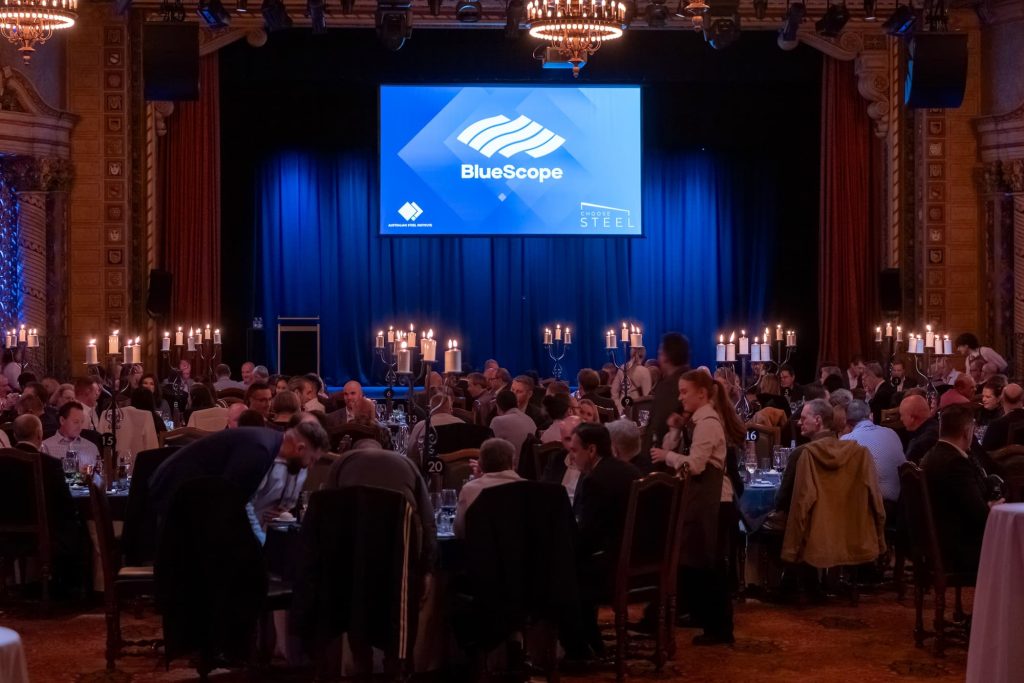
Tony Morriss, senior director of thematic macros research at AustralianSuper described the economic challenges ahead. He focused on five key themes including geopolitics and ‘de-risking’; energy transition, industrial policy and national security; peak globalisation; generative Artificial Intelligence; negative interest policy and low bond yields; and Australia’s ageing population.
Panel discussions
Day one also featured two lively panel discussions. David Varcoe (ASI state manager) hosted Andrew Walsh (CEO, Steeline Group) and Robin Awan (creative director, Bundy Agency) in a discussion on the creation of the ASI’s Choose Steel campaign.
The roll former-funded Choose Steel campaign employs a website (choosesteel.com.au) to promote steel as the preferred building material for home renovations. The website features a collection of compelling case studies, practical dos and don’ts for home renovation, and a comprehensive list of steel suppliers specialising in home renovations. Over 2,000 users visited the website in the first two weeks.
The ad component of the campaign employs digital billboards at key Melbourne transport locations including motorways and social media posts on Instagram and Facebook pointing home renovators to the Choose Steel website and its list of steel suppliers.
The second panel focused on customer perspectives in construction. It saw Al Baxter from Populous, Maria Mavrikos from Structural Challenge, Jerome Harris from John Holland, and Bonnie Ryan from GS1 share their perspectives.
Project case studies
Project case studies were back by popular demand, showcasing the innovative solutions across a myriad of applications and steel product groups.
Peter Blythe, managing director of Dynamic Steel Frame, delved into innovative cold formed steel structures. He detailed the $30 million Latrobe Valley GovHub, which features a façade framework design encompassing 19 light gauge steel modules. Each module is 8m wide and 14.5m high and comprises over 3 tonnes of BlueScope’s TRUECORE® steel, forming what could be the world’s largest light gauge steel façade.
Andrew Moir, managing director of ArcStructural, and Matthew Davey, structural manager of Multiplex, then took delegates through the design and construction of the 308 Exhibition Street Skybridge Project.
Designed by Cox Architects and Fender Katsalidis, 308 Exhibition Street is set to be one of Melbourne’s most iconic projects, with the two luxury towers connected by an innovative skybridge on level 46. The level 46 skybridge forms the rigid link between both towers, synchronising the movement generated from both wind and seismic forces. Tower one will be comprised predominantly of residential apartments, and tower two will be a five star hotel.
The main works for the project commenced with one of the largest concrete pours in Melbourne’s history—a day long concrete raft pour covering an area of 1,000m2 . This monumental 3m deep raft foundation is located on top of an existing railway tunnel and supports the new landmark mixed-use precinct.
The last case study saw Joseph Pirello from Aurecon provide an overview of Allianz Stadium. The New South Wales Government invested over $830 million in the development of the new 42,500 seat stadium. The new stadium consists of over 5,000 tonnes of Australian fabricated steel through the bowl (seating structure), roof, façade and miscellaneous items.
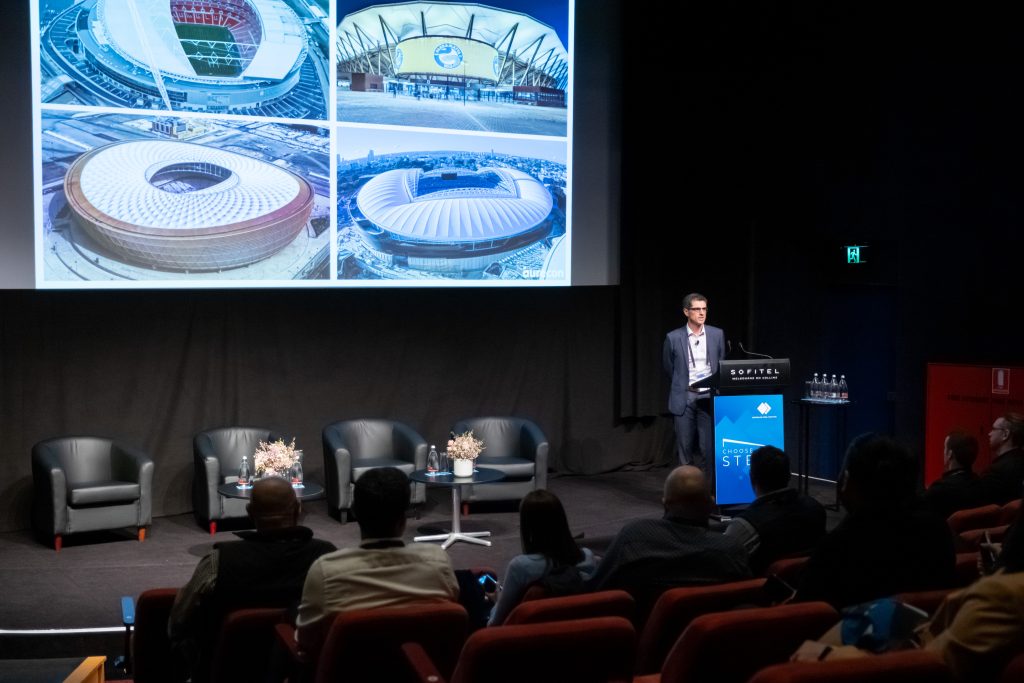
The design of the new Allianz Stadium builds on the legacy of the original. Its sweeping roof floats over the seating bowl and will cover all patrons with 100% drip line roof coverage. To achieve this result, the 2,000 tonne roof structure is shaped as a synclastic diagrid shell.
This is supported by four corner ‘super columns’ (derricks). Spanning between the derricks are inner arched trusses that measure approximately 140m and 90m in length, connected by large 260mm diameter pins. The structural design also includes an outer tension ring and underlying columns that not only support the roof, but connect it to the ‘bowl’ steelwork.
We choose steel
Tania Archibald, BlueScope’s chief executive of Australian steel products spoke about the critical role of steel, focused on how steel is key to a low emissions future.
Archibald detailed BlueScope’s infrastructure investments, including a $415 million expansion of metal coating capacity at its Erskine Park, New South Wales site. The additional metal coating line will have capacity to produce up to 240ktpa of BlueScope’s value-added, metal coated products. The project is expected to be fully commissioned and operational by the end of 2025.
The second major investment is the $1 billion rebuild of No 6 blast furnace at the Port Kembla Steelworks, which will provide the company with a bridge until new technology is developed that will allow commercially viable low emission steelmaking. Believed to be Australia’s largest ever steel infrastructure project, the reline will also create up to 300 new jobs in the Illawarra during construction.
Archibald also announced that BlueScope’s Western Port site in Hastings had been awarded ResponsibleSteelTM site certification—the global steel industry’s first sustainability standard and certification program. BlueScope’s iron and steelmaking operations in Port Kembla, New South Wales was awarded the certification in February 2022.
Adventure thinking: lessons from the edge
Justin ‘Jonesy’ Jones regaled delegates with stories from his adventures, including kayaking from Australia to New Zealand completely unsupported and unassisted. Initially, phenomenal progress was made: in five days, Jonesy and his mate Cas had paddled over 500km. Day two alone, saw the boys paddle 178km in 24 hours.
In the middle of the Tasman Sea, they were hit by a storm that raised 10m high seas and 100km per hour winds. This storm kept the boys captive for four days. It pushed them into the centre of a current whirlpool that forced them into a two-week loop in the centre of the Tasman Sea.
After breaking free, Jonesy and Cas had issues with sharks, barnacles, severe food and sleep deprivation, wasting muscles and adverse weather conditions. Finally, after 62 days out at sea, the boys pulled onto dry land at Ngamotu Beach, New Plymouth on the North Island of New Zealand.
Next up was Jonesy’s adventure that saw him and Cas ski from the Coast of Antarctica (Hercules Inlet) to the South Pole and back. After beginning the journey, unseasonal snow fall in the first two weeks and constant whiteouts saw incredibly slow progress. By the end of the first month in Antarctica, they had only completed 300km of the 2275km. With only two months remaining the journey looked to be impossible. On Day 62 of the journey they reached the South Pole, with 27 days left to complete the return journey.
Battling infection, starving and sleep deprived, Jonesy and Cas skiied close to 15 hours and 50km each day on the return. They crossed the finish line on Australia Day.
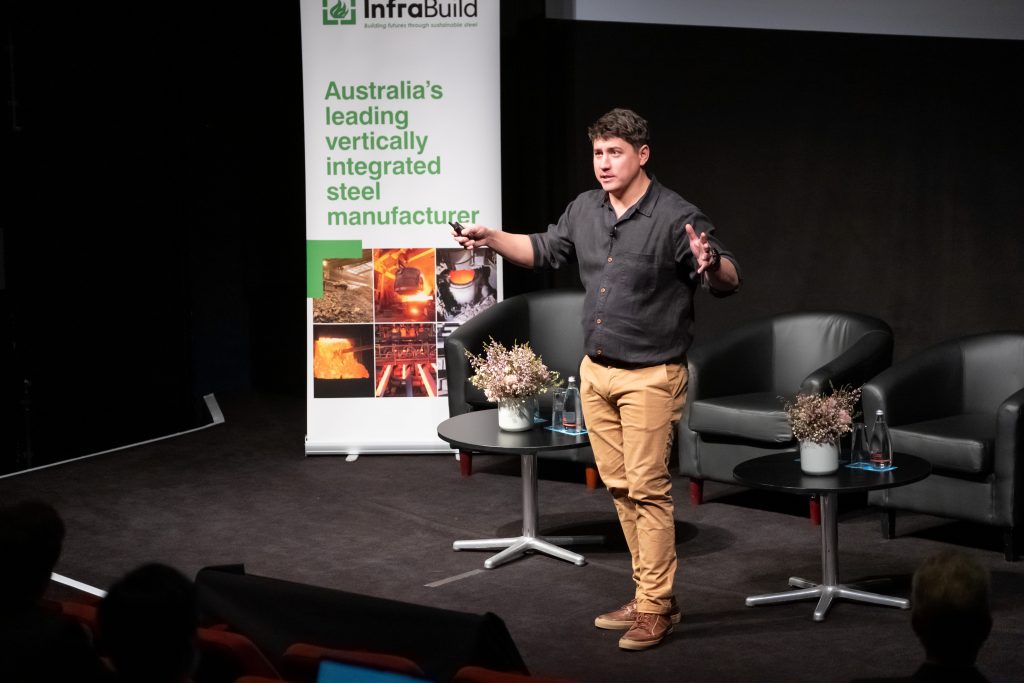
A lower emissions future
Wayne Harris of Liberty Primary Steel, and Geoff Feurtado, CFO of InfraBuild, spoke about capitalising on a low emissions future.
Feurtado told the convention that renewable energy has presented the steel industry with an enormous opportunity. Feurtado said steelmakers and the industry needed to be ready to take advantage of the push towards a carbon neutral future.
“Change has been a constant in the Australian steel industry and we have proven we have not only the ability to respond but how to leverage change as an opportunity to grow and diversify,” Feurtado said. “The opportunity as Australia navigates the pathway to a prosperous low emissions economy, over the coming decade, and beyond, will be one of our most significant. Industry now has to be ready for the acceleration as government seeks to catch up.”
Feurtado cited the massive amounts of steel required for every wind farm and every solar facility and the growing appetite among industry for third party accreditation to demonstrate we are a responsible and transparent sector
Ministerial address: Brendan O’Connor
Keeping steel jobs onshore is vital for the economy, Federal Minister for Skills and Training Brendan O’Connor told the Australian Steel Convention. O’Connor said the Federal Government had allocated $15 billion in its National Reconstruction Fund to building infrastructure locally, with locally made steel an important part of that plan.
“Steel is the backbone of the construction industry,” O’Connor told the convention. “Our government is committed to ensuring the Australian steel industry remains robust and active. Part of that plan is a strong stance on anti-dumping.”
“The federal government had invested $1 billion to create fee-free VET training in key areas including manufacturing and construction trades. Ten thousand new energy apprentices will be able to access $10,000 each in support under the program,” O’Connor said.
Caught in the crossfire
During her 15-year military career, Matina Jewell served on five missions and earned nine war medals. She was appointed officer in command of the HMAS Kanimbla, then Australia’s largest Navy ship, at only 23 years old. She was the first woman in the Australian Army to complete the physically demanding Navy Ship’s Diver course, and served as a peacekeeper with the United Nations in Syria and Lebanon.
Jewell’s keynote focused on how authentic, values-based leadership often takes great courage. She drew on her extraordinary experience of conquering one seemingly insurmountable leadership challenge after another, to help reframe our perspective on life. Jewell reminded delegates that it takes leaders who are courageous, and who have vision, to lead their organisation in a direction where they may not be 100% certain how things will look on the other side.
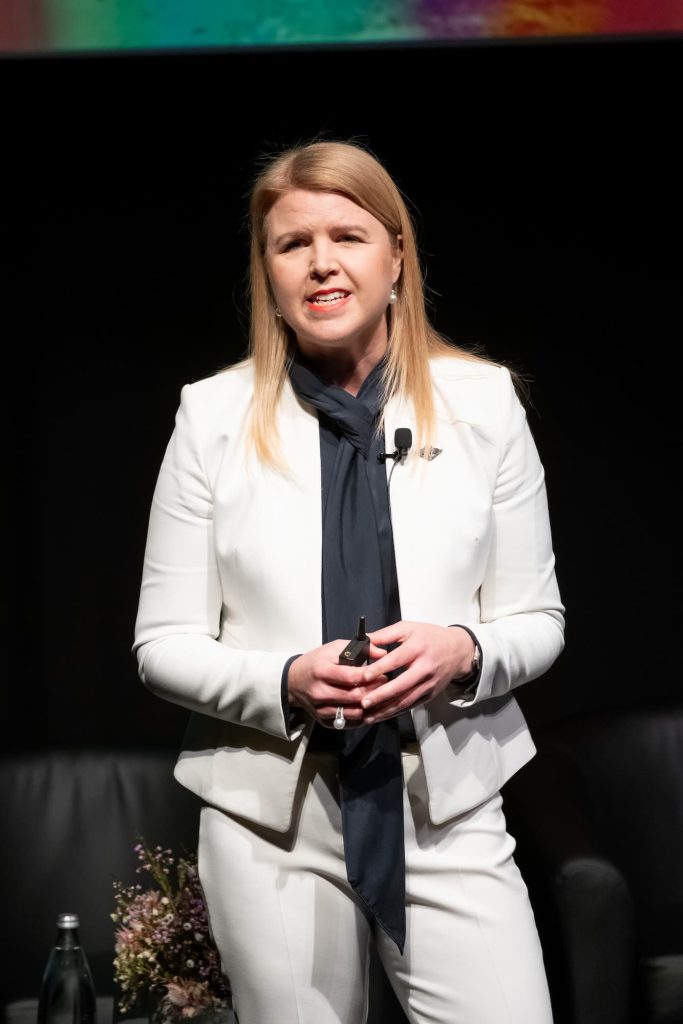
Choose steel as a career panel
Latest Jobs and Skills Australia (JSA) figures reveal continued jobs shortages in the steel industry, with fitter and metal fabricator jobs particularly affected. JSA’s 2023 Skills Priority List shows that 36% of occupations are in national shortage (332 out of 916)—5% higher than in 2022.
Among these, 47% were professionals, mostly related to health, engineering, information communication technology (ICT) and science roles. Another 33% were technician and trades workers occupations. All five of the largest employing non-construction trades occupations were also in shortage, including fitter and metal fabricator.
Young achievers panel
This skills shortage isn’t just a number—it represents projects delayed, potential innovations stalled, and industry growth curtailed. As such, the Australian Steel Convention dedicated a session to Choose Steel as a Career. This session featured a young achievers panel of: Shannon Kieran, structural engineer at Aurecon; Olivia Fanke, environment advisor at BlueScope; Atilla Mustafa, apprentice boilermaker at Structural Challenge; and Jonathan Rogers, sales representative at Vulcan.
As a structural engineer in Aurecon’s Darwin office, Shannon Kieran has provided structural design and construction site support services for projects in sectors as diverse as civil, energy, maritime, telecommunications, resources, infrastructure and defence. She has worked on steel, timber and engineered wood products, as well as reinforced and post-tensioned concrete structures in cyclonic and high wind environments. Shannon is also a lecturer at her local university, teaching civil and structural engineering as well as geotechnical engineering. Shannon was the winner of the ASI’s 2022 National Young Designer, Detailer or Tradesperson Award.
Olivia Fanke is an environmental advisor at BlueScope’s Western Port site. She has been with BlueScope for five years, starting in a position in their chemistry lab, before moving into an environment manager role at the Port Kembla site.
“I did work experience at BlueScope’s chemistry lab in year 10, which led me to study chemistry at school. I loved science and wanted to get into something science-based, but it wasn’t until I got to do hands-on things in the lab that I decided to study environmental science. Halfway through my career, a job at the chem lab popped up and I applied.”
Jonathan Rogers is an internal sales representative at Vulcan, who works predominantly in stainless steel. He had no particular background in steel when he first started at Vulcan, having worked in climbing gyms and as a baker.
“I heard about the vacancy at Vulcan and applied not knowing what the steel industry was all about. The visibility of the industry and the businesses related to steel is very low outside the industry itself. It has been fantastic working in steel—I have lots of opportunities, and work with a great team, and on a range of great projects and challenges,” Jonathan said.
Atilla Mustafa is a third year boilermaker apprentice at Structural Challenge. At 22 years of age, Mustafa commenced his apprenticeship later than most. However, he’s wasted no time in proving his commendable work ethic and dedication. From his first day, Atilla has displayed a passion and willingness to learn as much as he can about steel.
Initially, Atilla commenced his career with a plumbing apprenticeship. He soon realised that working with metal was where his passion lay, and sought out a boilermaking apprenticeship, securing a position with Structural Challenge soon after.
As Shannon commented, “We’ve all ended up in the steel industry almost by accident. I see this a lot of time with students coming through university. The problem is, students then struggle to understand what their day-to-day jobs will look like. University studies don’t prepare students well for what to expect when they get out into the workplace. Students get lost in their studies because they don’t see how what they’re learning is applicable to their career.”
Jonathan: “People who are my age tend to be looking at going to university, or they’re doing PhDs at the moment. For them, the idea of the steel industry is vague—they have no idea how broad the industry is, or that it even exists. Promoting the steel industry at schools and universities is essential. And promoting the fact there is a range of jobs is essential—the steel industry needs sales people, accountants, purchasing managers, boilermakers. There are so many jobs available.”
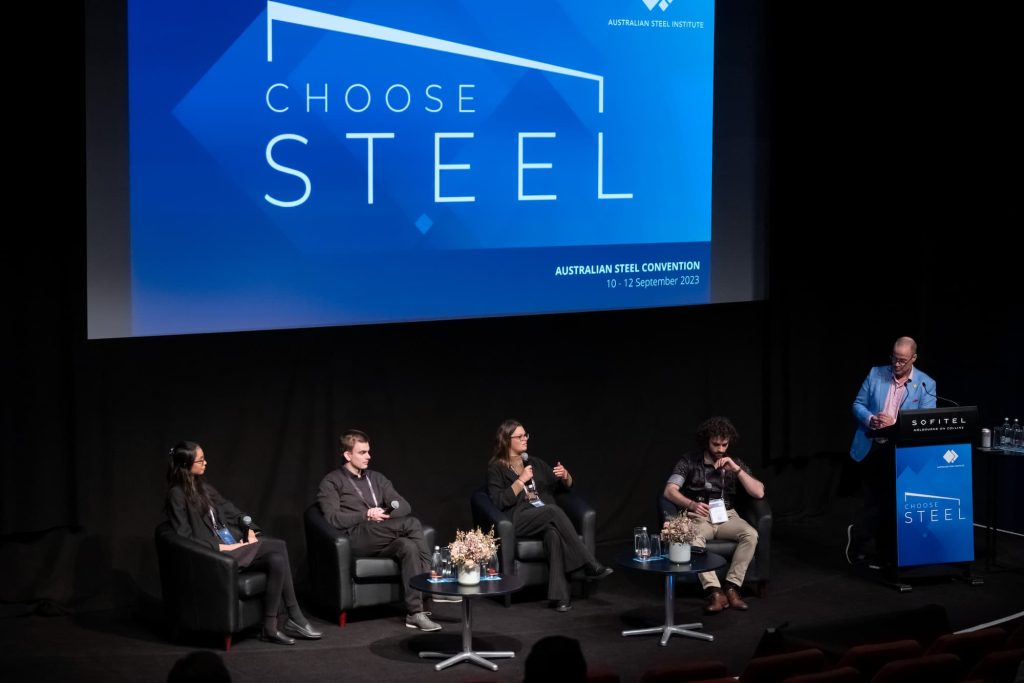
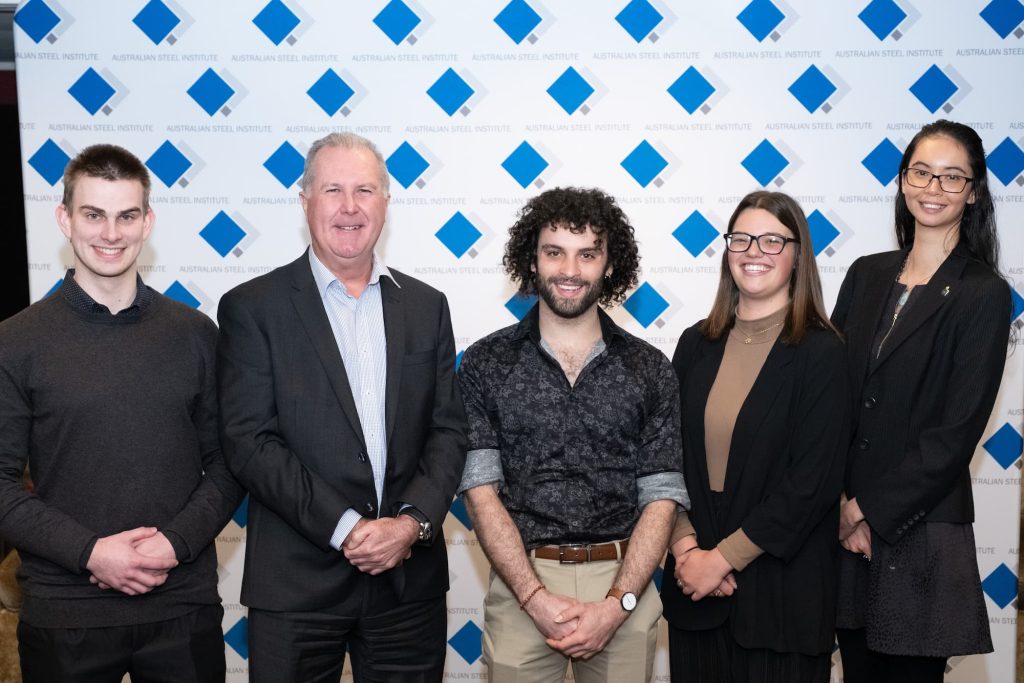
Atilla commented, “For our generation, everyone needs to feel that they are part of something—connected to something at a wider level, be it social or professional.”
When asked about the importance of longevity and stability in their careers, Jonathan said: “Vulcan provides a lot of opportunities to move forward, change roles, or move to a different site. Any company that can provide opportunities will be more likely to keep employees on-board, and keep them engaged.”
Olivia agreed: “Having flexibility of movement between roles, but within the same company is essential.”
Shannon: “It’s not necessarily about providing graduates with structured career progression. It can be as simple as making sure your employees have the opportunity to expand their skills and get as broad a range of experience as possible. In this way, you feel as though you’re growing and accomplishing something in your everyday role—you’re feeling engaged and challenged every day.”
When asked about the importance of, and preferred management style, Shannon said, “If your people are happy and want to be here, they will give their best. If they feel like they belong and are part of the team, and you have a culture where it is encouraged to speak up, share your opinions and ask questions, then younger staff will have that engagement and buy-in.”
Olivia: “I don’t think you need to be coddled and praised by your boss, but you need a supportive network in your day-to-day role.”
When asked about gender diversity within the industry, Olivia said, “I haven’t felt like I’ve been denied any opportunities being a woman. But there is a divide. BlueScope is working to bring more women into the industry.”
Shannon agreed: “I’ve never felt anything particularly special about being a woman. You never feel out of place in the offices, but it can sometimes happen out on-site. Usually, the barrier is that I’m young, rather than a woman.”
The younger generation is seeking meaningful and fulfilling work that aligns with their values and allows for a healthy work-life balance, while also valuing opportunities for career advancement and skill development in a dynamic and inclusive workplace. They want flexibility and the chance to make a positive impact on society.

